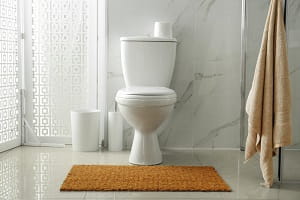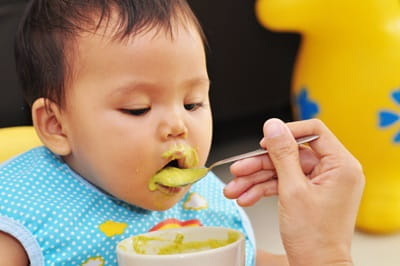What is poop, really?
Our stools are about 75 percent water (or they should be), with the rest made up of:
- Dead bacteria that gave their lives to help us digest our food
- Live bacteria
- Fiber and other indigestible waste products from food
- Protein
- Dead cells
- Fats
- Salts
- Mucus
- Bile
What is a healthy poop?
The ideal bowel movement should be about the color of a chocolate bar—regular milk chocolate, not dark chocolate. It should be long and smooth, like a snake, and about as big around as a banana. It should also hold together when you flush.
What can other colors mean?
The color of your poop can tell you quite a bit about your health:
- Black: Can be caused by iron supplements and certain medications, foods that contain beets or tomatoes, or upper intestinal bleeding (which could be dangerous)
- Red: Unless you recently ate red velvet cake, red stools are usually caused by bleeding in the lower GI tract, or at the rectum.
- White or pale gray: May point to a blocked bile duct, gallstones or a problem with the liver
- Yellow: Means that fat isn’t being absorbed, possibly due to a parasite or some type of inflammation
- Green: Usually means that food is passing through the digestive system too quickly, and the green bile doesn’t have enough time to mix with the iron and other substances to turn your poop brown
What about other shapes and sizes?
If you pass stools that are more like hard pebbles, or if they look like lumpy sausages made up of hard pebbles, then you are very constipated. If it’s more like a sausage with some cracks on the surface, then you have milder constipation, which could be due to a not-so-great diet or a lack of exercise.
On the other end of the scale, poop that is totally liquid (explosive diarrhea) usually happens when we’re sick, and the small intestine becomes irritated and collects extra water to flush itself out. Mushy, fluffy poop that has ragged edges, or that runs together when it hits the water, is less severe diarrhea. Stool that is just slightly loose—like soft blobs with distinct edges—is pretty common after meals, especially for people who have more than one bowel movement in a day.
When should I call the doctor?
A sudden change in the frequency, smell or shape of your stools, or any odd color that lasts more than a couple of days, is worth a call to your health care provider to see if you should come in for a visit.




